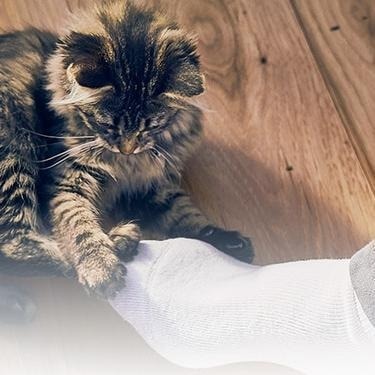
-
Find the right food for your pet
Take this quiz to see which food may be the best for your furry friend.
Find the right food for your pet
Take this quiz to see which food may be the best for your furry friend.
Featured products
 Adult 7+ Perfect Digestion Chicken, Whole Oats & Brown Rice Recipe Dog Food
Adult 7+ Perfect Digestion Chicken, Whole Oats & Brown Rice Recipe Dog FoodScience Diet's breakthrough nutrition supports ultimate digestive well-being & healthy microbiome for dogs age 7+
Shop Now Adult Perfect Weight & Joint Support Chicken Recipe Dry Dog Food
Adult Perfect Weight & Joint Support Chicken Recipe Dry Dog FoodThis weight management and mobility support dog food was created with Hill’s unique understanding of the biology of overweight dogs.
Shop Now Adult 7+ No Corn, Wheat, Soy Chicken & Brown Rice Dog Food
Adult 7+ No Corn, Wheat, Soy Chicken & Brown Rice Dog FoodSupports energy level and beautiful coat in mature dogs
Shop NowFeatured products
 Perfect Weight Salmon & Vegetable Canned Cat Food
Perfect Weight Salmon & Vegetable Canned Cat FoodOver 70% of cats lost weight within 10 weeks when fed this nutrition
Shop Now Adult Perfect Digestion Chicken, Barley & Whole Oats Recipe Cat Food
Adult Perfect Digestion Chicken, Barley & Whole Oats Recipe Cat FoodScience Diet's breakthrough nutrition supports ultimate digestive well-being & healthy microbiome
Shop Now Adult Savory Chicken Entrée Cat Food
Adult Savory Chicken Entrée Cat FoodPrecisely balanced nutrition with the delicious taste of savory minced chicken to help fuel the energy needs of cats during the prime of their life
Shop Now -
Dog
- Dog Tips & Articles
-
Health Category
- Weight
- Food & Environmental Sensitivities
- Urinary
- Digestive
- Joint
- Kidney
-
Life Stage
- Puppy Nutrition
- Adult Nutrition
- Senior Nutrition
Cat
- Cat Tips & Articles
-
Health Category
- Weight
- Skin & Food Sensitivities
- Urinary
- Digestive
- Kidney
-
Life Stage
- Kitten Nutrition
- Adult Nutrition
Featured articles
 Pet Food Storage Tips
Pet Food Storage TipsDiscover how and where to store your dry, as well as canned, dog and cat food. Learn how to find the "best before" dates on all Hill's pet food packaging.
Read More The Incredible Science Behind Your Pet's Microbiome
The Incredible Science Behind Your Pet's MicrobiomeLearn what a pet's microbiome is, how it contributes to your pet's gut & overall health, and why nutrition is important in maintaining healthy microbiomes.
Read More Water
WaterDiscover why water is the most important nutrient for your dog or cat to live a healthy life. Find out how much water your pet should consume each day.
Read More -
Find the right food for your pet
Find the right food for your pet



Cats with access to the great outdoors enjoy lots of fun experiences but they also face risks too: traffic, dogs, other cats, picking up fleas or contracting diseases…the list is endless. If you decide to let your cat explore the world outside your house, there are things you can do to help keep your cat safe.
What Age Should Your Cat Go Outside?
Kittens should not be allowed outside to mix with other cats until they are vaccinated. It is also much better to have your cat neutered before letting it have free access outdoors. Male cats that are not neutered tend to wander over a much wider area and get into fights with other male cats. This commonly results in cat bite abscesses developing and can even cause your cat to contract a viral disease. By the time a cat has completed a course of vaccinations and been neutered, they will be around 6 months of age and much more capable of looking after themselves.
What Time of Day is Best to Go Outside?
It is far better to let your cat outdoors in the morning, rather than at night, when they are more likely to be involved in a road accident because of poor visibility. Ideally adopt scheduled meal times, rather than allowing free access to food, for some weeks before allowing your cat outside. If you let your cat out shortly before feeding time, hunger will encourage your cat to comeback at meal times. You can also train your cat by using a sound - such as a bell, clicker or jangling keys before offering meals or food based treats. Making that sound tells your pet that you are in the vicinity with a food based reward. Simply shaking the food bag may result in lots of cats coming running! Leaving food outdoors can work but does not always help as it can attract neighboring cats that your own cat might be afraid of, further reducing the chances of them coming home.


Tasty Tips
Precautions for Outside
A collar with a bell will significantly reduce your cat's success in capturing small birds and can help you hear when your cat is in the area. Microchipping will enhance the likelihood of your cat being returned to you if found. There are a number of organizations that will register your contact details and give you a coded pet tag to place on your cat's collar. This is not just a visible means of identification; it can also be a more secure way of protecting your contact details. Some cat owners using address marked pet tags have been lured to a spot by a person who claims to have found their cat, only to return and find their home has been burgled.
Flagging the boundaries of your home and garden with cat scents from home can also help attract your cat back: a bit of bedding, hair or the contents of the litter box can all be used in an emergency when your cat has been away for too long.
When Not to Let Your Cat Outside
Moving to a new house can be a stressful time and the last thing you want is to lose your cat too. Keep your cat indoors for at least 2 weeks before allowing outdoor access at the new house and consider using a plug-in pheromone diffuser to encourage your cat to feel secure and relaxed in the new home. Last but not least, always keep an up to date photo of your cat to use in posters and so on if they are lost.


One of our staff authors prepared this article for you
Related products

Precisely balanced nutrition with the delicious taste of savory minced chicken to help fuel the energy needs of cats during the prime of their life

Over 70% of cats lost weight within 10 weeks when fed this nutrition

Science Diet's breakthrough nutrition supports ultimate digestive well-being & healthy microbiome

Feline Adult Perfect Weight Variety Pack
Related articles

Discover the benefits of Hill's line of kitten foods and how they provide complete and balance nutrition for growing kittens.

Discover which cat toys games your feline friend might like, and how they are great sources of exercise. Explore our library of articles to learn more.

Discover how to identify cat sensitive skin and what you can do to help your cat thrive from head to paw.

How do you get a cat to lose weight? Learn all about cat foods for weight loss, including how to choose weight control cat food and exercise tips.

Put your cat on a diet without them knowing
Our low calorie formula helps you control your cat's weight. It's packed with high-quality protein for building lean muscles, and made with purposeful ingredients for a flavorful, nutritious meal. Clinically proven antioxidants, Vitamin C+E, help promote a healthy immune system.
Put your cat on a diet without them knowing
Our low calorie formula helps you control your cat's weight. It's packed with high-quality protein for building lean muscles, and made with purposeful ingredients for a flavorful, nutritious meal. Clinically proven antioxidants, Vitamin C+E, help promote a healthy immune system.

